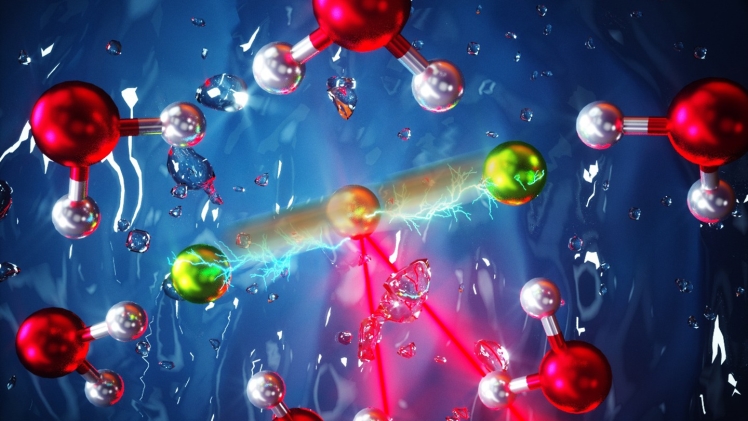Introduction:
Water, the elixir of life, holds within its simple molecular structure the key to sustenance and survival. At the heart of every water molecule lies the delicate interplay of hydrogen and oxygen atoms, forming a dynamic dance that shapes the very fabric of our existence. In this exploration, we unravel the molecular choreography, focusing on the elemental question: How many hydrogen atoms are in a molecule of water?
1. The Blueprint: H2O Molecule:
The chemical formula for water is elegantly simple: H2O. This composition succinctly captures the essence of water, revealing that each molecule consists of two hydrogen atoms and one oxygen atom. The arrangement of these atoms defines water’s unique properties and its indispensable role in biological and environmental processes.
2. Hydrogen, the Cosmic Prodigy:
Hydrogen, the most abundant element in the universe, plays a starring role in the creation of water molecules. In the context of water, hydrogen manifests as diatomic molecules (H2), where two hydrogen atoms form a stable bond, sharing electrons in a covalent arrangement. It’s this diatomic hydrogen that combines with oxygen to bring water to life.
3. The Oxygen-Hydrogen Bond:
The magic of water lies in the connection between its hydrogen and oxygen constituents. Each oxygen atom in a water molecule forms two single bonds with hydrogen atoms, creating a distinctive V-shaped structure. The electrons are shared, creating a polar covalent bond that imparts unique properties to water, such as its ability to dissolve a wide range of substances and form a variety of structures.
4. The Essence of Counting:
Now, let’s delve into the heart of the matter: How many hydrogen atoms are in a molecule of water? As established by its formula (H2O), each molecule of water consists of two hydrogen atoms. This numerical identity remains constant regardless of the scale – whether examining a single molecule or a vast ocean, the elemental ratio remains the same.
5. The Dance of Water Molecules:
In liquid form, water molecules engage in a dynamic dance. While individual hydrogen and oxygen atoms maintain their integrity, the bonds between them allow for a fluid and ever-changing arrangement. Water molecules can interact, forming a complex network of hydrogen bonds that contribute to water’s unique physical properties, such as high surface tension and the ability to moderate temperature.
6. Biological Significance:
Understanding the composition of water is paramount in the realm of biology. Living organisms, including humans, are composed mostly of water. The presence of hydrogen atoms in water is essential for life processes, from facilitating metabolic reactions to maintaining the structural integrity of cellular components. The hydrogen atoms in water molecules contribute to the universal solvent properties vital for biological functions.
7. Environmental Impact:
The abundance of water on Earth is a testament to the prevalence of hydrogen and oxygen in our environment. The water cycle, driven by the sun’s energy, involves the constant movement and transformation of water molecules. From evaporation to precipitation, the dance of hydrogen and oxygen atoms shapes the climate, sustains ecosystems, and influences the very geography of our planet.
8. Quantum Insights:
The dance of hydrogen and oxygen atoms is not merely a macroscopic phenomenon but extends into the quantum realm. Quantum chemistry provides insights into the behavior of electrons, the sharing of orbitals, and the energetics of chemical bonds. The quantum dance of water molecules at the microscopic level unveils the fundamental principles that govern the stability and reactivity of this life-enabling substance.
9. Technological Applications:
Beyond its biological and environmental significance, water’s molecular composition has practical applications in various technological fields. Understanding the behavior of hydrogen and oxygen bonds in water is crucial in fields such as materials science, chemical engineering, and environmental technology. Water’s unique properties, influenced by its hydrogen atoms, play a role in countless industrial processes.
10. Future Frontiers:
As scientific exploration advances, our understanding of water’s molecular dance continues to deepen. Research into novel materials, sustainable energy sources, and environmental conservation often involves the intricate interactions between hydrogen and oxygen atoms. Unlocking the secrets of water at the molecular level opens doors to innovations that can address global challenges and push the boundaries of scientific discovery.
Conclusion:
In the dance of creation, where atoms weave the tapestry of existence, the partnership between hydrogen and oxygen takes center stage in the molecule of water. The answer to the elemental question – how many hydrogen atoms are in a molecule of water – is a humble but profound “two.” This seemingly simple molecular arrangement encapsulates the complexity and beauty of water’s role in sustaining life, shaping landscapes, and fostering scientific exploration. As we marvel at the dance of hydrogen and oxygen in a single drop of water, we glimpse the universal choreography that binds the very essence of our existence.


